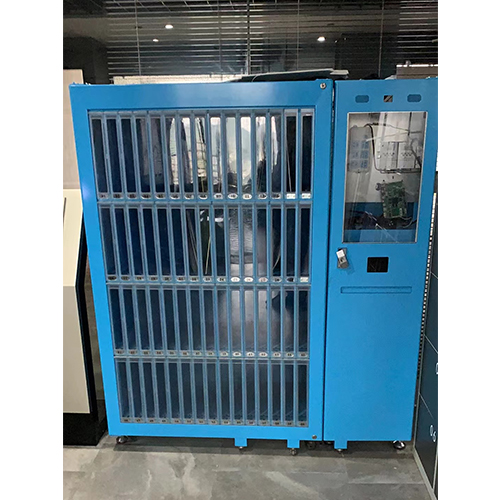In the digital age, libraries and educational institutions are constantly seeking innovative ways to make books more accessible to readers. One such innovation is the self-service book lending cabinet, an automated system that allows users to borrow and return books without human assistance. These cabinets function similarly to vending machines but are designed specifically for books, offering convenience, efficiency, and extended access to reading materials. This essay explores the concept, benefits, challenges, and future potential of self-service book lending cabinets.
What is a Self-Service Book Lending Cabinet?
A self-service book lending cabinet is an automated kiosk that stores books and allows users to borrow or return them independently. Equipped with RFID (Radio Frequency Identification) or barcode scanning technology, these cabinets can identify books, track loans, and manage inventory without requiring a librarian. Users typically interact with the system via a touchscreen interface, scanning their library card or using a mobile app to complete transactions.
These cabinets can be installed in various locations, including:
- Public libraries (as supplementary lending points)
- Universities and schools (for 24/7 access)
- Community centers and metro stations (to promote reading in public spaces)
- Corporate offices (for employee book-sharing programs)
Key Features and Functionality
1. Automated Borrowing & Returning
- Users can check out books by scanning their library card and selecting the desired book.
- The system automatically updates the library’s database to reflect the loan.
- Returns are processed by placing the book back into the cabinet, which scans and reshelves it.
2. Inventory Management
- The cabinet tracks available books and alerts librarians when restocking is needed.
- Some systems integrate with cloud-based library management software for real-time updates.
3. User-Friendly Interface
- Touchscreen menus guide users through the borrowing process.
- Multilingual support makes it accessible to diverse populations.
4. Security & Anti-Theft Measures
- RFID tags prevent unauthorized removal of books.
- Surveillance cameras may be installed to deter misuse.
Benefits of Self-Service Book Lending Cabinets
1. Convenience and Accessibility
- 24/7 Availability: Unlike traditional libraries with fixed hours, these cabinets allow users to borrow books at any time.
- Multiple Locations: Placing cabinets in high-traffic areas (e.g., train stations, malls) encourages spontaneous reading.
2. Reduced Operational Costs
- Fewer staff members are needed to manage book loans, cutting labor costs.
- Automated systems minimize human errors in tracking loans.
3. Encourages Reading Habits
- By making books more accessible, these cabinets promote literacy and lifelong learning.
- Schools and universities can use them to supplement classroom resources.
4. Space Efficiency
- Compact designs allow installation in small spaces where full libraries are impractical.
- Ideal for urban areas with limited room for large book collections.
Challenges and Limitations
Despite their advantages, self-service book lending cabinets face some challenges:
1. Technical Issues
- Malfunctions in scanning or software can disrupt service.
- Power outages or internet connectivity problems may hinder operations.
2. Limited Capacity
- Cabinets can only hold a small number of books compared to traditional libraries.
- Frequent restocking may be required for high-demand titles.
3. Security Concerns
- Vandalism or theft could occur in unsupervised locations.
- Users may accidentally damage books while handling them.
4. User Adaptation
- Some people, especially older generations, may struggle with the technology.
- Lack of human assistance could discourage first-time users.
Future Developments
To enhance functionality, future self-service book lending cabinets could incorporate:
- AI-Powered Recommendations: Suggesting books based on user preferences.
- E-Book Integration: Allowing users to borrow digital copies via QR codes.
- Blockchain for Security: Ensuring tamper-proof loan records.
- Solar-Powered Units: Making them sustainable and energy-efficient.
Conclusion
Self-service book lending cabinets represent a significant step forward in modernizing library services. By combining automation with user-friendly design, they provide a practical solution for expanding access to books in various settings. While challenges such as technical limitations and security risks exist, ongoing advancements in technology will likely address these issues. As society moves toward




















 WhatsApp
WhatsApp Phone
Phone